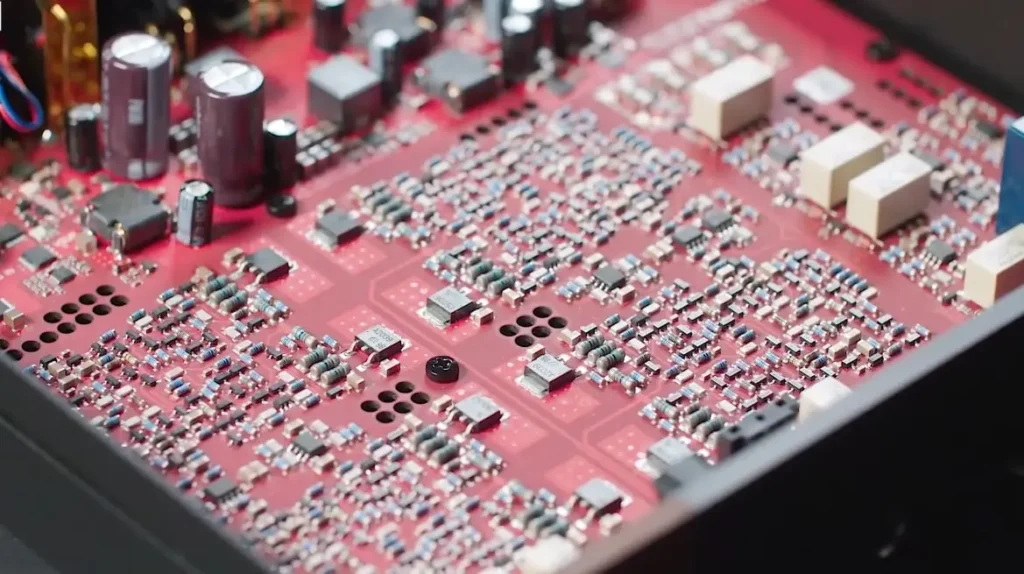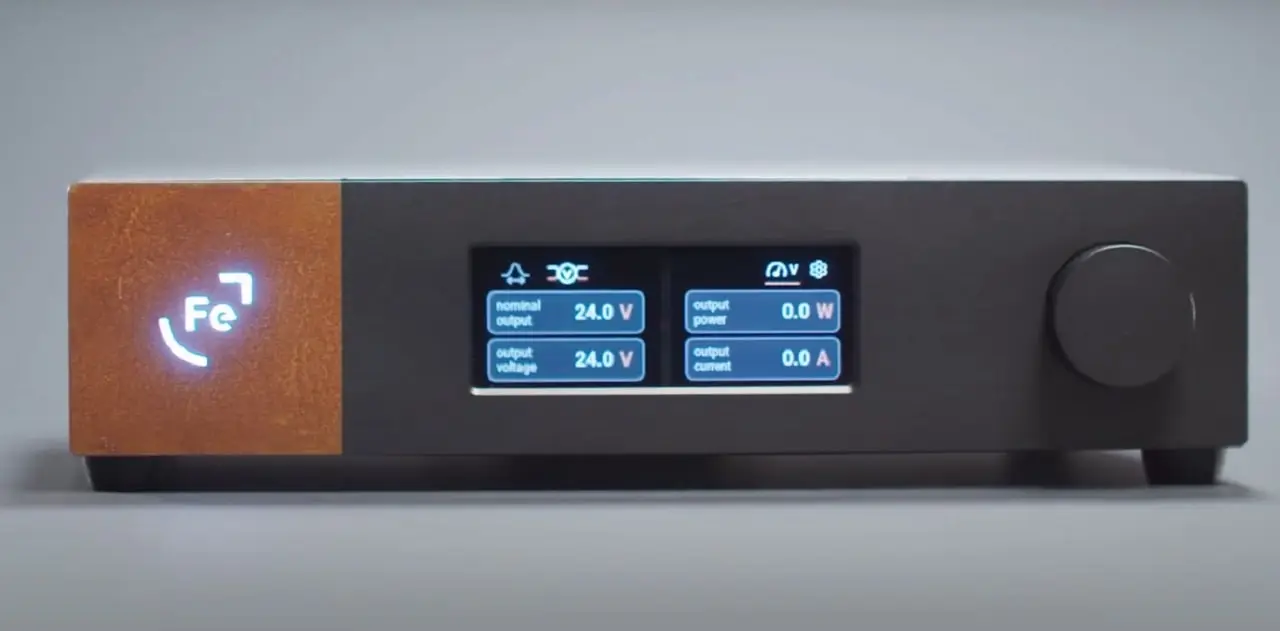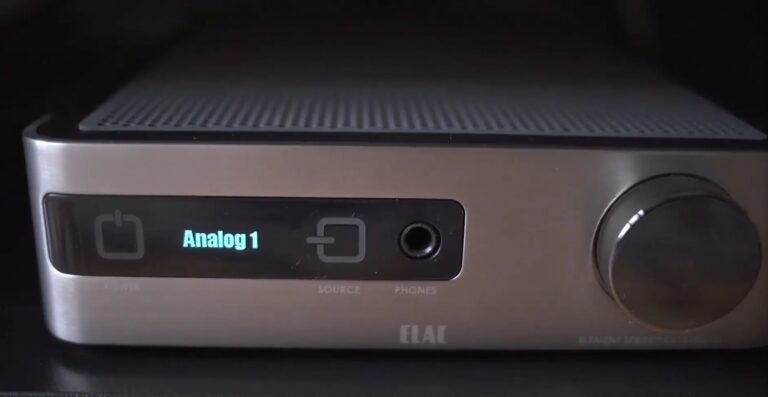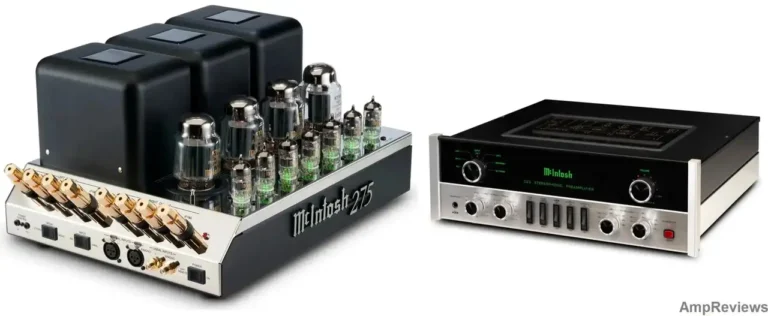Ferrum Audio OOR Review High-End Sound
Ferrum Audio OOR Review: In today’s world, it’s not unusual to see new Hi-Fi or High-End brands popping up. Many of them follow a similar path: starting in the background, making products for other companies, then stepping into the spotlight with their brand.
Ferrum Audio’s story follows this pattern. They began by making products for other companies, but over time, they gained enough know-how to create their own brand. Their first products, the OOR headphone amplifier and the enigmatic Hypsos device, mark their debut in the market.
So, Ferrum Audio’s journey is like many others, but with its unique twists and turns that we’ll uncover as we learn more about their products.
Some High-End Touch Ferrum Audio OOR Review
Desktop Hi-Fi has been gaining traction for over a year now. Initially, it was all about simple USB-DAC headphone amplifiers like the Celestial. However, the landscape has evolved dramatically since then. Now, the market for high-end desktop audio is vast and diverse, spanning across different regions. Notably, manufacturers from Asia, America, and Europe are all in the game.
Asian brands often focus on offering a wide range of options at affordable prices. This allows enthusiasts to build their micro-hi-fi setups without breaking the bank. On the other hand, European and American brands are prioritizing sound quality, consistently pushing the boundaries, and setting new standards.
Ferrum Audio is a newcomer to the desktop audio scene, but it has quickly made a name for itself as an innovator and trendsetter. Despite its recent debut, Ferrum Audio has already positioned itself as a leader, pushing the boundaries of what’s possible in the world of desktop audio.
Ferrum Audio isn’t just some upstart company; it’s the brainchild of a well-established Polish company called HEM. With two decades of experience under its belt, HEM has been a key player in the European distribution of Mytek products until recently. More than just a distributor, HEM is known as an ODM and OEM developer specializing in top-notch digital-to-analog and analog-to-digital audio interfaces. They’re experts in cutting-edge technologies like XMOS, DSD, and MQA.
Check Out: Cary Audio SI-300.2d DAC Amplifier Review
But here’s where it gets interesting: HEM wasn’t just distributing Mytek; they were also behind the scenes, crafting legendary home DACs and studio audio interfaces. So, when Ferrum Audio emerged, it wasn’t from nowhere. It had the backing of a company with deep roots in the high-end audio world. This means that Ferrum Audio’s engineering team is no stranger to crafting top-of-the-line sound experiences.
Sound Quality Ferrum Audio OOR
The first product launched by Ferrum Audio under its brand name is called Hypsos. Now, Hypsos isn’t your typical audio component; instead, its main purpose is to enhance the overall sound quality of your audio system. If you’ve already come across a detailed review of this device on Stereo.ru, feel free to skip ahead. But for those who haven’t, here’s a quick introduction.

Hypsos is essentially a power supply. However, it’s not just any power supply. It’s built on a hybrid circuit that combines both linear and switching technologies. This clever combination allows it to harness the best features of each: the purity and lack of noise from a linear power supply, along with the energy efficiency and dynamic performance of a switching device. So, while it may seem simple on the surface, Hypsos plays a crucial role in optimizing your audio system’s performance.
Connected To HYSOS Ferrum Audio OOR
In essence, when a component is connected to Hypsos, it receives nearly flawless power. Moreover, the device incorporates special circuits that continuously adjust the output characteristics in real time, ensuring stability and eliminating voltage and current fluctuations, especially during periods of high power demand.
Ferrum Audio has taken the concept of a stable and uninterrupted power supply to new heights within its proprietary ecosystem. The OOR headphone amplifier, for instance, can be paired with Hypsos using a specialized four-wire FPL (Ferrum Power Link) cable. This cable includes an additional pair of
conductors for feedback, which helps mitigate factors like cable resistance, ensuring top-notch
power delivery.
However, Hypsos isn’t limited to just the OOR amplifier; it can be paired with a variety of Hi-Fi and High-End components. Equipped with a standard connector, it offers adjustable output voltage ranging from 5 to 30 volts, capable of delivering up to 6 amps of current. The device’s firmware includes preset modes for numerous audio components, offering convenience for users.
But what’s particularly intriguing is that users have the option to fine-tune power management themselves. The front panel features a regulator that allows users to adjust the output voltage in precise 0.1-volt increments. This level of control not only serves as an effective tool for sound customization but is also entirely safe, ensuring optimal performance without risk.

Hypsos, the power supply from Ferrum Audio, offers a comprehensive range of protections to safeguard your audio system. It covers everything from overload and reverse polarity to short circuits and more. This means it not only protects against incorrectly configured settings but also shields your components from potential power supply issues.
In essence, Hypsos stands out as one of the safest power supplies available, offering peace of mind and ensuring the uninterrupted operation of your audio setup.
Amplification Ferrum Audio OOR
The OOR, Ferrum Audio’s headphone amplifier, followed the release of Hypsos and boasts a fully balanced circuitry from start to finish. However, users have the flexibility to connect components with unbalanced outputs if they prefer. A notable feature is the combined handle, which serves as both a switch and an input selector. When in the middle position, the amplifier is off, and turning it to the right or left activates the XLR or RCA inputs, respectively. This allows users to literally “choose a side.”
In line with its High-End status, the functionality of the OOR is streamlined. It caters to both balanced and unbalanced headphones, regardless of the selected input, and offers the option to connect an external power amplifier or active speakers. There are no digital inputs, wireless modules, or other modern features typically found in amplifiers. Analog switching is limited to two types of inputs.
The amplifier’s circuitry is entirely discrete and operates in a balanced mode even with unbalanced inputs. Any signal received at the RCA connectors is immediately converted to balanced before entering the amplification circuit. One notable feature highlighted by the manufacturer is the operating mode of
The output transistors, which prevent them from fully turning off, ensure maximum linearity in the transfer function.
The OOR headphone amplifier combines elements of both class AB and class A operation, resulting in minimized distortions and maximum energy release for dynamic musical passages. This unique design approach ensures that the amplifier remains transparent and neutral, thanks to the absence of capacitors in the signal path, allowing for a maximized frequency response and reduced distortion levels.
For personal audio enthusiasts, the OOR offers a delightful performance. With a low output impedance of 0.3 ohms, it promises excellent control even with low-impedance headphones. Furthermore, its impressive output power of 5.5 watts into 32 ohms and 800 milliwatts into 600 ohms (in balanced mode) caters to owners of power-hungry headphones like Planars. To accommodate different headphone sensitivities, a three-position control allows users to adjust the amplifier’s output relative to the standard level.
The OOR can be powered either by a conventional AC adapter with a standard 5.5/2.1 mm coaxial connector or by Hypsos, which features a proprietary input. This flexibility ensures that users can power the amplifier according to their preferences and setup requirements.
What About the Design of Ferrum Audio OOR
Before delving into the sound quality of the Ferrum Audio set, it’s essential to acknowledge its design. The Hypsos power supply and OOR headphone amplifier are meticulously crafted to complement each other seamlessly. However, for complete sound reproduction, the system requires at least a USB DAC or a network player with an analog output that the amplifier can interface with.
This attention to design ensures that every component in the audio setup not only performs exceptionally but also blends harmoniously in terms of aesthetics and functionality. By carefully selecting and integrating each piece, Ferrum Audio aims to deliver a holistic audio experience that is both sonically and visually satisfying.
Pairing Ferrum Audio OOR
Since developers haven’t yet paired the OOR with either a USB DAC or a network player (although there is a DAC with a headphone amplifier called ERCO available), users will need to combine Ferrum Audio’s components with other devices. However, it’s worth noting the striking design of both HYPSOS and OOR. With a width of 217 mm, they each occupy half the standard rack size. This means that when placed side by side, they only take up the space of one full-size component on a Hi-Fi rack.
If you’re assembling a stack, Aurender network players with an index of 100, along with a DAC and a network player from Ferrum Audio, as well as a Mytek Brooklyn series power amplifier, would fit perfectly into a single stack. Their facade widths match, ensuring a cohesive and aesthetically pleasing setup.
Another noteworthy design feature is the backlighting of the logo on both Ferrum Audio devices. This logo illumination comes with smooth brightness control, facilitated by a wheel located on the back wall of the device. This feature is particularly useful for desktop components that are likely to be placed directly in front of the user, allowing for comfortable adjustment of LED brightness levels.
What about the Analog audio of Ferrum Audio OOR
As an all-analog device with a singular focus, the OOR headphone amplifier is expected to excel in its primary task. In a market filled with integrated devices that handle complex headphones adeptly, the OOR must stand out by delivering flawless performance. Convincing DAC amplifier owners to opt for a separate external device for their headphones requires exceptional quality and attention to detail. The OOR aims to meet this challenge head-on by offering unparalleled sound reproduction and reliability, setting a new standard for headphone amplification.

The comparison between the OOR headphone amplifier and the built-in amplifier of the Brooklyn DAC+ swiftly dispelled any doubts about the OOR’s suitability. When tested against the Brooklyn DAC+ using an Aurender N20 as the source, the OOR showcased its superiority. It delivered a larger, more voluminous sound with the same level of clarity and detail, enriched timbres, and deeper, more accurate bass. The Ferrum Audio amplifier belongs to a higher quality class, offering a homely, high-fidelity sound that captivates attention with its focus on melody, artistic beauty, and atmosphere.
The OOR’s rounded and soft sound reminded me of the Graham Slee amplifiers, but it appeared more detailed, balanced, and nuanced. Its natural and unconstrained sound lends itself perfectly to traditional audiophile content, allowing listeners to immerse themselves in the nuances and subtleties of recordings by artists like Dire Straits or Patricia Barber for hours.
However, when it came to more intense and energetic material, I felt a lack of density and pressure in the sound. Genres like metal and hard rock sounded somewhat deliberately elegant and refined through the OOR. While this presentation suits well for symphony orchestra concerts, it fell short in delivering the raw energy and intensity present in album versions of such genres.
Gain
Ah, the gain controller—sometimes, the solution is right there in front of us. With a slight increase in the gain, simply by turning the volume knob in the opposite direction, everything clicked into place! Suddenly, the missing density filled the sound, the bass became more controlled and clear, and bands like Korn sounded angrier, while Queen regained their signature drive and energy, all without losing their inherent refinement and charm.
With a bit of attention to matching headphones and amplifiers, the OOR proves to be quite versatile across musical genres. Whether it’s the intricate bass lines of Les Claypool, the powerful vocals of Dave Gahan, or the grand compositions of Sergei Rachmaninoff, they all sound equally impressive through this amp. The OOR’s ability to adapt and deliver outstanding performance across various musical styles highlights its versatility and quality.
Configuration of Ferrum Audio OOR
Considering system configuration from the perspective of sound quality sheds further light on the role of the OOR amplifier. It serves as a valuable tool for discerning the sound character of high-end sources, both comparable to and superior to the OOR itself. This implies that there’s a place for the OOR amplifier even within a High-End system.
Moreover, the OOR amplifier doesn’t tend to expose the shortcomings of the reproduced content or the connected source. Instead, it focuses primarily on enhancing the artistic component of the musical material. This characteristic is advantageous, as it means that even with a modest source, the introduction of Ferrum Audio devices into the system will yield noticeable improvements in quality. Additionally, any shortcomings in other components of the audio chain will be less glaring, ensuring a more enjoyable listening experience overall.
The choice of headphones also plays a significant role in shaping the overall sound experience with the OOR amplifier. Starting my listening tests with heavy artillery like the Audeze LCD-5 headphones and their younger counterparts was not only a test of sound quality but also of the amplifier’s endurance, given that planar headphones can be quite demanding loads. Adjustments to the gain were necessary to accommodate these headphones.
To understand how the amplifier would behave with less demanding loads, I connected several in-ear and full-size models with armature and dynamic drivers. The effect of gain adjustments on the sound varied depending on the power and impedance of the headphones, sometimes with no audible effect at all. Overall, the results were quite predictable.
However, during these experiments, another notable characteristic of the OOR amplifier became apparent: it could reveal well-known headphone models in such a way that their sound became completely unrecognizable. For instance, the Beyerdynamic DT 770 Pro was surprised with an exceptionally balanced frequency response, a quality they hadn’t boasted before. Additionally, the sound was remarkably detailed, rhythmic, and devoid of any booming or blurring in the bass frequencies. This underscores the amplifier’s ability to extract the best performance from a variety of headphones, enhancing their sonic characteristics in unexpected ways.
The Beyerdynamic DT 770 Pro retained its characteristic density and focus of sound, typical of closed headphones, when paired with the OOR amplifier. However, with the help of the OOR, the DT 770 Pro exhibited a scale, tonal balance, and nuance that closely resembled the semi-open DT 880 Pro and open DT 990 Pro models. This transformation highlighted the OOR amplifier’s ability to elevate the performance of headphones, bridging the gap between closed-back and open-back designs.
While this sonic enhancement wasn’t as pronounced with budget models, it was evident across a wide range of headphones, even those significantly less expensive than the amplifier itself. This underscores the OOR amplifier’s versatility and its capacity to unlock the potential of various headphone models, regardless of their price point.
Verdict Ferrum Audio OOR Review
The experimentation with different headphones and sources highlights the appeal of pairing the OOR and Hypsos as an attractive audiophile investment. You can begin with just one OOR amplifier, paired with headphones and a mid-range source. Then, as your preferences evolve, you can systematically and methodically upgrade your setup, moving up the quality scale from average Hi-Fi to high-end, all the while retaining the OOR amplifier.
However, it’s important to note that despite its numerous advantages, the OOR amplifier isn’t entirely neutral in its sound reproduction. The developers themselves describe it as “the only amplifier that has a soul,” capturing the essence of its character. This distinctive sonic personality adds an extra dimension to the listening experience, contributing to its allure and appeal among audiophiles.
Unlike analytical and perfectionist studio amplifiers, which deliver the unadulterated truth of the recording without embellishment, the OOR amplifier offers its unique approach to music. It provides a warmer, more soulful, and softer rendition, subtly concealing flaws while accentuating virtues. As a result, the OOR combines high information content and sound accuracy with the expressiveness and musicality typically associated with the finest home Hi-Fi equipment. This distinctive blend of qualities makes the OOR amplifier an enticing choice for those seeking an engaging and emotionally resonant listening experience.
Pros and Cons Ferrum Audio OOR
Pros
Making it suitable for use with headphones of different sensitivities.
Detailed and Balanced Sound quality.
Cons
Price: The OOR amplifier may be considered expensive for users with having low budget.
Price of Ferrum Audio OOR
For €1,995.00, the OOR amplifier represents a significant investment in high-quality audio equipment. This price point places it firmly in the high-end segment of the market, reflecting its premium build quality, advanced features, and exceptional sound performance. While the cost may be considered steep for some, it’s important to recognize that the price reflects the craftsmanship, attention to detail, and engineering expertise that go into creating a product of this caliber. For audiophiles who prioritize top-tier sound reproduction and are willing to invest in their audio setup, the OOR amplifier offers a compelling option.
Where to Buy Ferrum Audio OOR
Ferrum Audio OOR is available at:
Futureshop
Ferrum Official Website
mimic-audio
technology factory
redape
igloo audio
FAQs (frequently asked questions) Ferrum Audio OOR
Q: What headphones are compatible with the OOR amplifier?
A: The OOR amplifier is compatible with a wide range of headphones, from entry-level to high-end models. It can drive headphones with varying impedance levels and sensitivities, making it suitable for a diverse range of audio setups.
Q: Can the OOR amplifier be used with other audio equipment?
A: Yes, the OOR amplifier can be paired with a variety of audio sources, including DACs, network players, and music players. It can also be integrated into existing audio systems or setups to enhance sound quality.
Q: How does the OOR amplifier compare to other headphone amplifiers?
A: The OOR amplifier offers a unique sound character that sets it apart from other headphone amplifiers. Its warm and musical sound signature, combined with exceptional clarity and detail, makes it a popular choice among audiophiles seeking an engaging listening experience.
Q: Does the OOR amplifier require any special setup or configuration?
A: The OOR amplifier is designed to be easy to set up and use. It can be powered by a conventional AC adapter or the Hypsos power supply for optimized performance. Users can adjust gain settings to match the sensitivity of their headphones, ensuring optimal sound quality.
Q: Is the OOR amplifier suitable for professional use?
A: While the OOR amplifier is primarily designed for home audio enthusiasts, its high-quality sound reproduction and versatility make it suitable for professional applications as well. However, professional users may have specific requirements or preferences that should be taken into consideration.
Awards Ferrum Audio OOR
EISA Award: Best Product 2022-2023 Headphone Amplifier







